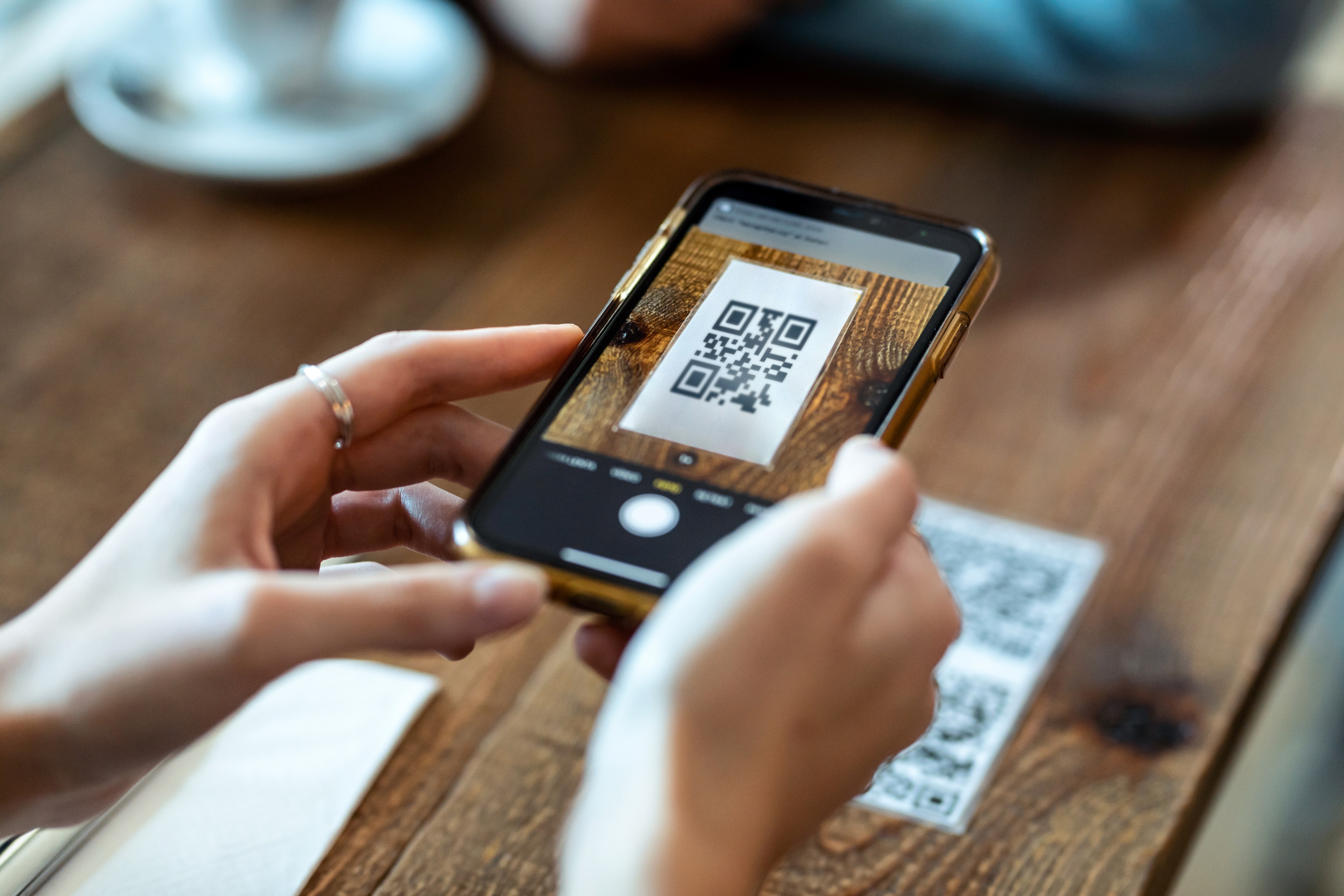You wanna know what really grinds my gears? QR Codes, especially when it comes to the realm of restaurants.
Don’t get me wrong. I’ll still support any eating and drinking establishment that chooses to use this technology. In fact, some of my favorite San Francisco spots use QR Code menus.
I’ll still be a perfectly polite and pleasant patron, but I’ll simultaneously be seething on the inside.
And I get it. I get that there’s a case for the little black-and-white squares, which as everyone knows, you access via the camera on your smartphone.
But let’s start from the beginning: The QR Code, short for Quick Response Code, was invented in 1994 by Masahiro Hara of Denso Wave (a Japanese automotive company). He got the idea while playing Go, a board game similar to Othello, and realized the square four-sided configuration of a code would be more efficient than a standard UPC barcode. The company made the technology public and started selling scanners.
When everyone started carrying around phone cameras in their pockets in the early 2000s, the technology reached the masses. But it wasn’t until Covid hit, and restaurants and bars shuttered and then gradually reopened in 2020 that QR Code menus boomed—under the misguided belief that high-touch surfaces like menus could be super-spreaders.
With the federal government advising restaurateurs to “avoid using or sharing items that are reusable,” establishments started replacing menus with QR Codes so workers wouldn’t have to spend half their shifts sanitizing laminated menus (I don’t blame them). With “social distancing” the mantra of the day, companies like Toast used the technology to enable contactless ordering.
I see the advantages—I really do. There’s less waste and lower printing costs. The codes reduce front-of-house labor for servers, who don’t have to take and remember orders—which is important now more than ever with labor shortages and high costs.
Another potential pro to QR Codes in restaurants to consider: You can order at your own pace. Want another small plate or a different drink? No need to try to make eye contact with a server who never seems to look your way. Tap tap tap, et voilà.
I don’t mind paying via QR Code, either. It removes a layer of the whole money exchange part of the dining experience. No need to hand over a card and wait for it to come back—I can pay and leave.
San Ho Won, one of the best restaurants in San Francisco (and America, according to Esquire’s list of the Best New Restaurants of 2022 list), has a QR Code on the menu that links to a glossary. Did you know haepari means “jellyfish” in Korean?
In the same vein, I’ve found it useful when traveling internationally to have QR Codes that link to translated menus. Like when I’m ordering at my favorite restaurant in Naples—pizza seems like a fine use case for QR Codes.
Also—the codes have the potential to save guest data and preferences, so in theory, if I revisited a restaurant, it could know my allergies (none), aversions (don’t love grapefruit) and even when to send out a dessert with a candle to celebrate my special day. Heck, if I was a restaurateur, I might love QR Codes.
But I’m not. I’m just a diner. And as I enter my curmudgeonly old age, I resist things like change and technology.
Here’s one reason I dislike QR Codes: They just don’t work well. The page never seems to load. Or it’s difficult to navigate or edit your order or change your mind. I swear I’m not completely inept.
And even when QR Codes do work, it’s just not that fun to sit at a restaurant and stare at my phone. I do enough of that during the rest of my day. Yes, I’m always the first one to capture that perfect photo for the ’Gram—but that’s for the people (and my memory, of course).
What’s more—QR Codes do the opposite of creating a vibe. I think a good physical menu plays a big role in a restaurant’s identity. The typeface, the logos, the font, the way the dishes are poetically described with beautiful offset indentations, like at Zuni Café or Nopa. A good menu should feel good.
I love a nice hand-written menu. Especially if it’s in cursive. Even if I can’t read it, at least I can ask someone about it. A chalkboard menu is great, too—I love that. It shows that the chefs are changing stuff. It shows they care.
I recently went to a casual sushi counter where the menu was on a QR Code, but a server still took my order, explained the specials and answered all my questions. That was nice, but what would have been nicer is if the QR Code element was removed. Everything just looks the damn same when ordering from a menu on a screen.
Apparently, I am not alone in my feelings about this particular use of technology. Earlier this year, the menu management and printing platform MustHaveMenus told the New York Times that it has seen a sharp decline in the use of the menu QR Codes it provides to restaurants across the country, and fewer restaurants are creating them.
Kristen Hawley, the founder of the restaurant technology newsletter Expedite, told the paper that the reason for the decline of QR Code menus is simple: “They are almost universally disliked.”
Meanwhile, a handful of restaurants and bars have swung in the other direction, banning screens entirely.
Who knows? Maybe we will someday look back on the invention of the QR Code menu as the moment when we started realizing that mealtimes should be for sustenance and social connection. Or at least not for looking at your phone.
Omar Mamoon is a San Francisco-based writer & cookie dough professional. Find him on Instagram.
